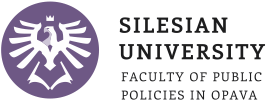Central European Papers 2014, 2(1):74-87 | DOI: 10.25142/cep.2014.006
The German Occupation of Cluj - Kolozsvár and its Consequences on the History of the City in 1944
- Departamentul de Ştiinţe Juridice şi Studii Europene, Facultatea de Ştiinţe şi Arte, Cluj-Napoca, Universitatea Sapientia, Jogtudományi és Európai Tanulmányok Tanszék, Természettudományi és Művészeti Kar, Kolozsvár, Sapientia Erdélyi Magyar Tudományegyetem, Department of Juridical Sciences and European Studies, Faculty of Sciences and Arts, Sapientia Hungarian University of Transylvania, Calea Turzii 4, 400193 Cluj-Napoca, jud. Cluj, Romania, muradinjanoskristof@yahoo.com
This year, there is the 70th anniversary of the German occupation of Hungary. Therefore, with this study I would like to commemorate this very important historical event, which had decisive effects on the future of the Hungarian state and society as well. Naturally, until nowadays there have appeared a lot of books, studies and scientific articles which present the occupation, but most of them deal with the problem in general, referring to the whole country.
In order to complete the general scene, in my study I focused only on the capital of the Northern Transylvanian region, reincorporated to the Hungarian Kingdom in 1940. The city of Kolozsvár (today, officially in Romanian language: Cluj-Napoca) was the administrative and cultural center of the eastern part of Hungary in that time, therefore it shows very well the exact consequences of the occupation. First of all, I shortly presented the political and military conditions of the German invasion of the country, and after that, the occupation process of Kolozsvár. For a better description of the entering of Wehrmacht troops in the city, I used some interviews made to persons who were eye-witnesses to the events. Beside these, I obtained a lot of data from the local contemporary Hungarian and Romanian press, and several scientific publications and articles published recently.
The main objective of this study is to realize an analysis of exact consequences of the German occupation of Kolozsvár in 1944 upon the population of the city, and especially upon the Jewish community. Through the description of the mass arrests of left wing sympathizers, and the collection of the Jews in ghettos, as well as the deportation process, I tried to present one of the most dramatic period of the old, historical city of Kolozsvár.
Keywords: German troops, invasion, occupation, Gestapo, Jews, concentration, ghetto, deportation, Holocaust, citizens, indignation, fear
Published: March 1, 2014 Show citation
References
- Ellenzék, 1944, Year 65, No. 67.
- Keleti Újság, 1944, Year 27, No. 84.
- Keleti Újság, 1944, Year 27, No. 118.
- Tribuna Ardealului, 1944, Year 5, No. 1004.
- Ferenc László, interview by author, tape recording, Kolozsvár, 11 November 2003.
- Sándor Dózsa, interview by author, tape recording, Kolozsvár, 6 November 2003.
- Márton Varga, interview by author, tape recording, Kolozsvár, 10 November 2003.
- ABLONCZY, Balázs: A visszatért Erdély 1940-1944, Budapest 2011.
- BETHLEN, Béla: Észak-Erdély kormánybiztosa voltam, Budapest 1989.
- BRAHAM, Randolph L.: A magyar Holocaust, vol. 2, Budapest 1988.
- CSATÁRI, Dániel: Forgószélben. Magyar-román viszony 1940-1945, Budapest 1968.
- FINKELSTEIN, Arnold David: Fénysugár a borzalmak éjszakáján, Tel Aviv 1958.
- GAAL, György: Kolozsvár kétezer esztendeje dátumokban, Kolozsvár 2001.
- GOSZTONYI, Péter: A magyar honvédség a második világháborúban, Budapest 1995.
- GOSZTONYI, Péter: Légiveszély, Budapest! Szemelvények Magyarország második világháborús történetéből (1939-1945), Budapest 1989.
- KÁLLAY, Miklós: Magyarország miniszterelnöke voltam 1942-1944, vol. 2, Budapest 2012.
- LŐWY, Dániel: A téglagyártól a tehervonatig. Kolozsvár zsidó lakosságának története, Kolozsvár 1998.
- MURÁDIN, Kristóf János: Összmagyar gondolat regionális köntösben. Az Erdélyi Párt története 1940 és 1944 között, in: Trianoni Szemle, 5, 2013, 1-2, 79.
- ORMOS, Mária: Magyarország a két világháború korában (1914-1945), Debrecen 1998.
- ÖRVENDI, Ignác: Magyarország német megszállása, Budapest 1993.
- RÁNKI, György: Unternehmen Margarethe: Die deutsche Besetzung Ungarns, Budapest 1984.
- ROMSICS, Ignác: Magyarország története a XX. században, Budapest 2003.
- SCHRAMM, Percy Ernst: Kriegstagebuch des Oberkommando des Wehrmacht (Wehrmachtführungsstab) 1940-1945, vol. 4, Frankfurt am Main 1965.
- ŞORBAN, Raoul: Remember. 40 de ani de la masacrarea evreilor din Ardealul de Nord sub ocupaţia horthystă, Bucharest 1985.
- THIRRING, Lajos: A visszacsatolt keleti terület. Terület és népesség, in: Magyar Statisztikai Szemle, 1940, 663.
- VÁGÓ, Béla: Political and Diplomatic Activities for the Rescue of the Jews of Northern Transylvania, in: Yad Vashem Studies 6, 1967, 155.
- VARGYAI, Gyula: Magyarország a második világháborúban, Budapest 2001.
- WEINBERGER, Moshe Carmilly: A zsidóság története Erdélyben (1623-1944), Budapest 1995.
This is an open access article distributed under the terms of the Creative Commons Attribution 4.0 International License (CC BY 4.0), which permits use, distribution, and reproduction in any medium, provided the original publication is properly cited. No use, distribution or reproduction is permitted which does not comply with these terms.



